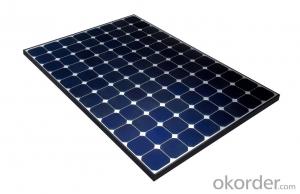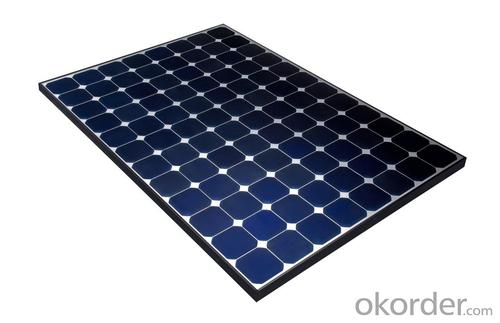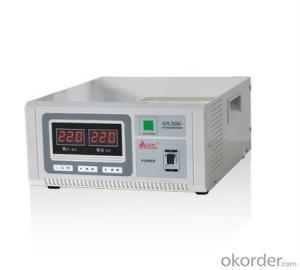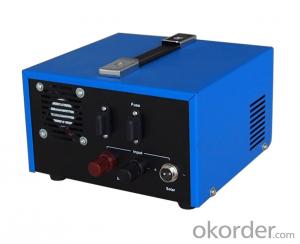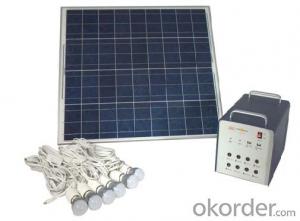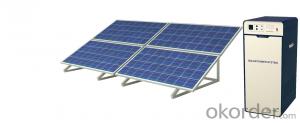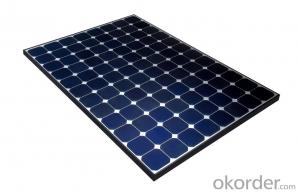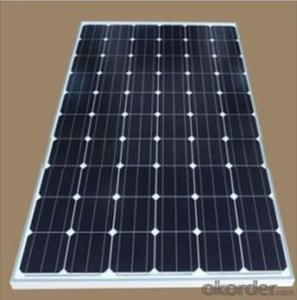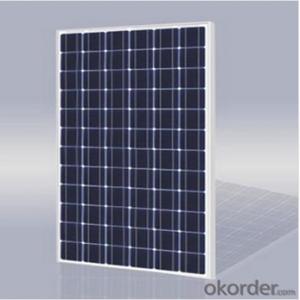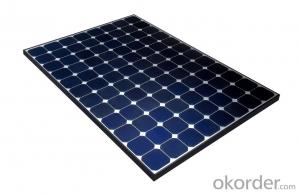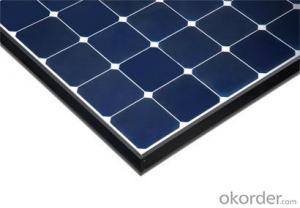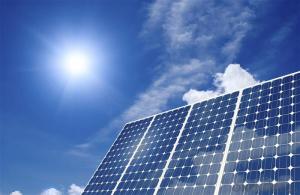Small Scale Solar Energy Systems:200kw CNBM Monocrystalline Silicon Panel for Home Use
- Loading Port:
- Tianjin
- Payment Terms:
- TT OR LC
- Min Order Qty:
- 15 watt
- Supply Capability:
- 1000 watt/month
OKorder Service Pledge
OKorder Financial Service
You Might Also Like
Specification
200KW CNBM Monocrystalline Silicon Panel for Home Using
Production description
he price of solar power, together with batteries for storage, has continued to fall so that in many countries it is cheaper than ordinary fossil fuel electricity from the grid (there is "grid parity"). For example in 2015, an average home in Europe or the US could use around 3,000 kilowatt-hour (kWh) in electricity each year.[1] Twelve 280 watt solar PV modules (each generating 250 kWh annually) would generate at least 3,000 kWh each year, even in a cloudy country like the UK. An example market price would be about £8,000 in the UK, $12,000 in the US, or €10,000 in theEurozone in 2015, which is certain to continually fall,[2] allowing permanent energy independence for each household. Most governments have feed-in tariff systems that allow homeowner to sell surplus energy back into the grid, and make a future profit on their investment.Off-the-grid homes are autonomous; they do not rely on municipal water supply, sewer, natural gas, electrical power grid, or similar utility services. A true off-grid house is able to operate completely independently of all traditional public utility services. The idea has been recently popularized by certain celebrities including Ed Begley, Jr.[1] who stars in Living with Ed[2] television show on the Home & Garden Television (HGTV) network. Actress Daryl Hannahpromotes off-grid living and constructed her home in Colorado according to those principles, as does survival expert and Dual Survival co-star Cody Lundin,[3]who lives in a self-designed, passive solar earth house in the high-desert wilderness of Northern Arizona, collecting rainwater, composting waste, and paying nothing for utilities.[4][5]
Electrical power can be generated on-site with renewable energy sources such as solar (particularly with photovoltaics), wind, micro hydro, geothermal; with agenerator or Micro combined heat and power with adequate fuel reserves. Such a system is called a stand-alone power system. In addition, it is possible to simply eliminate electric power such as in Old Order Amish and Old Order Mennonite communities.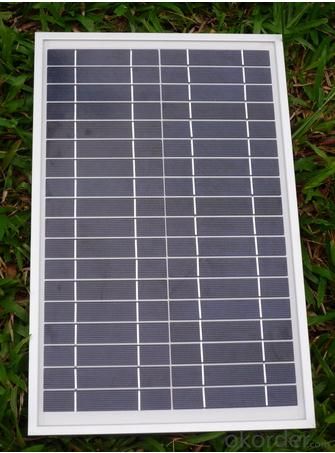
Feature
1.High conversion efficiencies resulting in superior power output performance.
2.Outstanding power output even in low light or high temperature conditions
3.Optimized design for ease of soldering and lamination
Physical characteristic
1. Rigorous quality control meets the highest international standards.
2. High-transmissivity low-iron tempered glass, strong aluminium frame.
3. Using UV-resistant silicon.
4. IS09001/14001/CE/TUV/UL
Packaging
26pcs in one carton 6pallets in 20foot container 14pallets in 40 foot container.
- Q: Can solar energy systems be used for powering electric vehicle testing tracks?
- Yes, solar energy systems can be used for powering electric vehicle testing tracks. Solar panels capture sunlight and convert it into electricity, which can be used to power various electric devices, including electric vehicle charging stations and infrastructure on testing tracks. By installing solar panels near or on the testing tracks, electric vehicles can be charged directly from the renewable energy generated on-site, reducing dependence on fossil fuels and minimizing greenhouse gas emissions. Additionally, solar energy systems can provide a reliable and sustainable source of power for electric vehicle testing tracks, allowing for continuous testing and reducing operating costs. Overall, utilizing solar energy systems for powering electric vehicle testing tracks is a viable and environmentally friendly solution.
- Q: Can solar energy systems be used for powering financial institutions or banks?
- Yes, solar energy systems can be used to power financial institutions or banks. Solar power is a sustainable and renewable energy source that can help reduce electricity costs and carbon footprint for these institutions. With advancements in technology and decreasing costs of solar panels, many financial institutions are now adopting solar energy systems to meet their energy needs, promote environmental sustainability, and demonstrate their commitment to clean energy.
- Q: Can solar energy systems be used in areas with limited access to solar grounding equipment?
- Yes, solar energy systems can still be used in areas with limited access to solar grounding equipment. While proper grounding is important for safety and system performance, there are alternative methods available that can be used in such areas. These methods may involve using specialized mounting systems, such as pole-mounted or ballasted systems, or utilizing ground-mount systems that do not require extensive grounding equipment. It is essential to consult with solar energy professionals or engineers to determine the most suitable and safe approach for installing solar energy systems in these situations.
- Q: Do solar energy systems require surge protection?
- Indeed, surge protection becomes imperative when it comes to solar energy systems. The susceptibility of these systems to power surges caused by lightning strikes, grid fluctuations, or other electrical disturbances necessitates the presence of surge protection. The fragile electronic components of a solar energy system, like inverters or charge controllers, can be severely compromised or even annihilated by power surges. Hence, the deployment of surge protection devices, such as surge protectors or surge arresters, is crucial in diverting excessive voltage away from the system, thereby safeguarding it from harm and ensuring its durability. Furthermore, the inclusion of surge protection is often mandated by electrical codes and regulations to guarantee the safety and dependability of solar energy systems.
- Q: How does the efficiency of solar panels vary across different panel technologies?
- The efficiency of solar panels can vary significantly across different panel technologies. Traditional silicon-based panels, also known as monocrystalline or polycrystalline panels, have an average efficiency range of 15% to 20%. However, newer technologies like thin-film solar panels, such as amorphous silicon or cadmium telluride, have lower efficiencies ranging from 10% to 12%. On the other hand, emerging technologies like perovskite solar cells have shown great promise with efficiencies exceeding 25%. Therefore, it can be concluded that the efficiency of solar panels varies based on the specific technology employed.
- Q: Are there any ongoing monitoring requirements for solar energy systems?
- Yes, there are ongoing monitoring requirements for solar energy systems. Regular monitoring is necessary to ensure that the system is functioning optimally and generating the expected amount of electricity. This includes checking for any performance issues, such as shading or malfunctions, and monitoring the energy production and consumption. Additionally, monitoring helps identify any potential maintenance or repair needs, ensuring the longevity and efficiency of the solar system.
- Q: Can solar energy systems be used in areas with limited access to solar monitoring software?
- Yes, solar energy systems can still be used in areas with limited access to solar monitoring software. While solar monitoring software can provide valuable data and insights to optimize solar energy production and performance, it is not a requirement for the basic functionality of solar energy systems. Solar panels can still generate electricity from sunlight and be connected to a power grid or battery storage system to provide renewable energy, even without the advanced monitoring software.
- Q: Can solar energy systems be used in powering greenhouses or nurseries?
- Yes, solar energy systems can be effectively used in powering greenhouses or nurseries. The abundant sunlight available in these environments makes solar power an ideal and sustainable energy source. Solar panels can be installed on the rooftops or nearby areas to harness solar energy, which can then be used to power various greenhouse operations such as lighting, heating, and irrigation systems. This reduces reliance on traditional energy sources and helps create a more eco-friendly and cost-effective solution for powering these agricultural facilities.
- Q: What are the maintenance requirements for solar energy systems?
- Solar energy systems have varying maintenance requirements based on their type and size. In general, solar panels are easy to maintain and require minimal upkeep. However, there are a few important tasks that can enhance the system's performance and lifespan. Regular cleaning of the solar panels is essential. Accumulation of dust, dirt, leaves, and other debris on the panel surface can lower their efficiency. By using a soft cloth or gentle water spray, the build-up can be removed, maximizing energy production. Another crucial maintenance task involves checking the wiring and connections of the solar system. Over time, wires may become loose or damaged, impacting system performance. Regular inspections and tightening of connections can prevent issues and ensure smooth operation. Monitoring the system's performance is also vital. Most solar systems are equipped with monitoring software, allowing homeowners to track energy production and identify potential problems. Regular monitoring helps detect any decline in performance or malfunctioning components, enabling timely repairs or replacements. Additionally, it is advisable to have a professional inspection of the solar energy system every few years. A qualified technician can thoroughly assess components like panels, inverters, and batteries (if present), identifying signs of wear or damage and addressing them before they escalate. Overall, solar energy systems have relatively low maintenance requirements. However, regular cleaning, checking connections, monitoring performance, and periodic professional inspections are crucial for optimal functioning and longevity.
- Q: How long does it take for a solar energy system to pay for itself?
- The payback period for a solar energy system varies depending on various factors such as the initial cost, energy usage, local solar incentives, and financing options. On average, it typically takes around 5 to 10 years for a residential solar energy system to pay for itself through energy savings. However, with decreasing installation costs and increasing energy prices, the payback period is often shorter nowadays. Additionally, commercial and utility-scale solar systems may have different payback periods due to their larger scale and potential tax benefits.
Send your message to us
Small Scale Solar Energy Systems:200kw CNBM Monocrystalline Silicon Panel for Home Use
- Loading Port:
- Tianjin
- Payment Terms:
- TT OR LC
- Min Order Qty:
- 15 watt
- Supply Capability:
- 1000 watt/month
OKorder Service Pledge
OKorder Financial Service
Similar products
Hot products
Hot Searches
Related keywords
